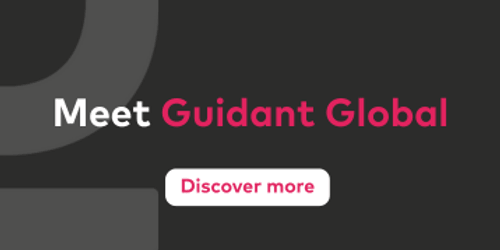

Author
Senior Vice President, Client Solutions, Guidant Global
Driving workforce program adoption through business engagement
Discover how business engagement drives workforce program adoption, improves hiring outcomes, and boosts ROI in this insight from Guidant Global.
Effective workforce management programs involve collaboration between HR and procurement leaders. Many partners utilize third-party workforce solutions providers such as Guidant Global to ensure they can access the talent, tools, and innovation required to deal with the complexities of managing all kinds of global workers, from full-time employees to consultants and freelancers. Such solutions might include managed service provider (MSP), services procurement/statement of work (SOW), and recruitment process optimization (RPO).
Adoption is often cited as the biggest challenge of contingent workforce programs by HR and procurement leaders. Despite investing in sophisticated programs and systems, 22% of program sponsors say adoption is their number one struggle, according to SIA. In other words, program sponsors struggle to get the organization’s actual users—the hiring managers and business operators—to embrace and actively engage with workforce solutions. Low business adoption rates impact workforce solution ROI and, more broadly, overall business agility.
Most of the time, adoption struggles aren’t about people resisting change—they just haven’t heard the message in a way that clicks. If we want managers to shift how they work, we need to speak their language: speed, reducing risk, staying in control, and hitting business goals. It’s not about forcing new workflows—it’s about showing them a better, smarter way to get things done.
True adoption happens when business leaders and managers see the program as a smarter, faster way to get results—not just the 'approved' way.
Co-Create vs Mandate
Program sponsors often find themselves in a tough spot—trying to prove the value of the workforce management program while also getting the business to actually use it. It gets frustrating fast. And when hiring managers go off-script, bringing in contingent or SoW talent from vendors outside the preferred list, it means missing out on big cost savings.
Successful workforce management programs manage to internal governance teams, which include procurement, HR, external partners, and business units who’ll be on the frontlines. The unique views of business leaders in IT, Engineering, and other specialized areas are vital to the program’s success. Yet too frequently, they’re excluded from the process. When we understand what really matters to each business unit, it becomes a lot easier to get them on board and fully engaged.
Start by treating hiring managers as co-creators, not just users. Bringing them into early design and listening to their desired outcomes (e.g., speed to hire, project fit, risk protection) helps embed the program as a tool for them, not just about them. Roles-based engagement strategies—such as tailored communications and support to the unique needs of IT, Engineering, and other specialized units – are recommended.
Finally, thorough knowledge of the enterprise’s total workforce strategy is crucial. Full-time hiring initiatives directly impact the external workforce. Without a holistic view, the two can compete as opposed to complement each other.
Focusing on user experience versus process
The root of most adoption challenges lies in a fundamental disconnect. Too often, workforce programs focus heavily on process rather than user experience. This is understandable, as HR and procurement teams are focused on streamlining workflows and controlling costs. However, hiring managers, department heads, and business unit leaders who use these systems often view them as obstacles.
The result? Programs that fail to deliver real value when it matters most: at the points of hiring need throughout the organization.
Rather than focusing on enforcing process, aim to reduce friction and increase perceived benefit at every touchpoint. When the experience feels like a business enabler, not a bureaucratic hurdle, usage becomes habitual.
To move from compliance enforcement to business enablement, workforce programs must adopt a people-first and insight-led model. That means viewing adoption not as a one-time launch, but a continuous change journey.
Four steps to building a successful workforce management program
1. Voice of the Customer (VoC)
The most successful programs begin with gathering and acting on feedback from users throughout the business. This means moving beyond cumbersome annual surveys to creating an ongoing dialogue with the people who regularly use your program. Voice of the customer tools include:
-
Just-in-time net promoter score (NPS) feedback integrated directly into your workflow tools.
-
Regular operator interviews focused on friction points rather than feature requests
-
Embedded program management resources within business units to gather ongoing insights.
You’ll receive real-time feedback about how business operators want to communicate (e.g., text, phone, email), what positions they hire most, and what friction points they’ve encountered. For example, when a Guidant Global program manager at an energy company did a brief NPS survey, she uncovered that one stakeholder loved working with us but found a specific form frustrating. This was an easy fix!
2. Secure executive sponsorship
Successful adoption requires C-suite sponsorship. When senior leadership understands and champions the value of workforce programs, adoption naturally follows. This isn't about mandates – it’s about creating an environment where using the program becomes the obvious choice because of the value it delivers. Think carrot versus stick.
Once established, reinforcing executive sponsorship should be visible and ongoing, not just a kickoff endorsement. Leaders can model adoption behaviors and share success stories to normalize program use.
3. Align program management specialists with their business unit counterparts
Hiring managers don’t want to speak with generalists. They want to connect with someone who speaks the language of their business – this is especially true with specialized business units such as engineering, finance, and accounting. Programs that drive engagement align Talent Specialists and program managers with specific business units, creating relationships built on domain expertise and an understanding of specific hiring challenges. They understand industry-specific talent markets and are capable of providing strategic insights rather than just transactional support.
4. Celebrate and amplify success stories
Sharing successes across the business is important. High-performing workforce management programs collect and share success stories through user groups, internal newsletters, and other formal methods to build internal advocacy and learn best practices.
Highlighting specific outcomes—such as increased productivity, cost savings, improved employee satisfaction, and more efficient processes—helps illustrate the tangible benefits of workforce management initiatives. These stories serve as living proof of the program’s value and help build credibility and momentum for further adoption.
The partnership imperative
Successful workforce management programs are partnerships among procurement, HR, external partners, and the business operators who use the system. Too often, the business units are left out of the equation, yet they are essential to program success.
If we take the time to understand what drives value for each business unit, remove the roadblocks, and bring business leaders and hiring managers in as true partners, adoption and engagement will follow. The organizations that really get this right don’t just see better results—they gain a real edge with faster hiring, better talent, and lower costs. And in today’s cost-conscious world, that kind of transformation isn’t a nice-to-have—it’s a must.
Insights to drive workforce performance
Workforce insights in your inbox
Sign up for our newsletter with the latest workforce management news, insights, analysis and more.
Australia
Suite 1403, Level 14
309 Kent Street
Sydney
NSW 2000
United Kingdom
United States
27777 Franklin Road
Suite 600
Southfield
Michigan 48034









